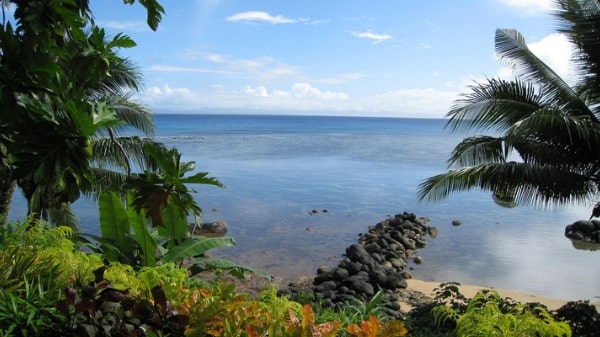Nestled serenely in the very bluest part of the Pacific Ocean are the exquisite Fiji Islands, 333 of them all told. While some are big enough to house the largest city the region has to offer, some are so small that they are little more than sandbars. Amid such splendour and variety, one particular promontory – Taveuni – has emerged at the very forefront of the local luxury tourism industry. Appropriately enough, it was actually the first of the Fiji Islands to be discovered by the outside world.

This initial contact came in 1643 when a Dutch expedition bound for Australia made landfall there, though it was to be the Brits who commanded sovereignty here for nearly 100 years (1874-1970). Independent since 1970, the economy of the islands is largely propped up by its exports of cane sugar and coconut derivatives. However, recent years have seen their earnings wholly dwarfed by Fiji’s burgeoning tourist receipts. This is, perhaps, because the islanders are just so unbelievably hospitable.

From your concierge to your dive instructor, the warmth of the welcome goes well beyond the professional, impressing with the kind of sincerity seldom seen in most tourism-reliant nations. As a result, you may well find yourself greeted as a long-lost friend and gently nudged towards “Fiji Time” – a pace of life far more relaxation-oriented than that found in the bustling mega-cities of China.
It is, however, the perfect tempo for savouring Taveuni’s famously sandy beaches, lush foliage, clean air and abundant fresh, local produce. All in all, even the most stressed-out urban refugee couldn’t help but be won over by the island’s beguiling views, fine food, memorable music and ever-friendly Fijian welcome.

Rightly rejoicing in its reputation as the Garden Island, Taveuni is actually the third-largest landmass in this archipelago nation, while also being one of the least densely populated. A lush green jungle intertwined around hidden waterfalls and encircled by soft white sandy beaches, the island is, at heart, a truly multisensory treat.
Given its proximity to the legendary Somosomo Strait – rightly regarded as “the soft coral capital of the world” – Taveuni has always been a popular choice among scuba enthusiasts. Here, professionals and novices alike can also swim their way around the Great White Wall, an almost vertical 30-foot stretch of soft white coral.

As well as the coral and anemones that are unique to this part of the world, more familiar creatures can also be found in Fiji’s surrounding depths. The nearby Mamanuca Islands, for instance, are home to a sizable colony of Pacific green turtles. As an officially endangered species, as well as one revered in Fijian culture, dive guides are always on hand to ensure these graceful long-lived amphibians remain undisturbed by curious holidaymakers. Indeed, you may be glad of their presence later when a blacktip or whitetip reef shark suddenly glides by. Rest assured, though, these relatively small (1.6 metres) members of the shark family seldom dine on divers.
For the aquatically averse, there are any number of non-oceanic sights to be seen – not least the Bouma National Heritage Park. Home to more than 100 species of exotics birds and rare insects, here you can trek over bridges and through thick jungle canopies to your heart’s content. Don’t miss the captivating Tavaro waterfalls – they’re pretty much what Instagram was invented for.

The requisite sight-seeing completed, there is really one thing left to do – dine, preferably in truly-luxurious, finely-prepared, locally-cuisined style. As with any island nation, fish features heavily in the typical Fijian diet, with kokoda (ko-kon-da) the must-try menu item of choice. Served as a cold soup, this genuinely delicious combination of coconut milk, lime juice, capsicum and white fish is the ideal pick-me-up after a long day of diving or hiking, or even if you have just been lazing on the beach. Essentially, it’s a central Pacific take on ceviche and in what world could that be a bad thing?

Then, as the night draws in, it’s only right to complete your cultural immersion by sampling as many of the tropical cocktails on offer as your following morning’s itinerary will allow. Maybe even one or two more than would be strictly wise. Glass in hand, swaying to the arresting rhythms of one of the island’s many musicians, you truly are on Fiji Time and who in their right mind would set their watch to anything but?
Text: Alice Duncan
Photos: AFP, Alice Duncan



